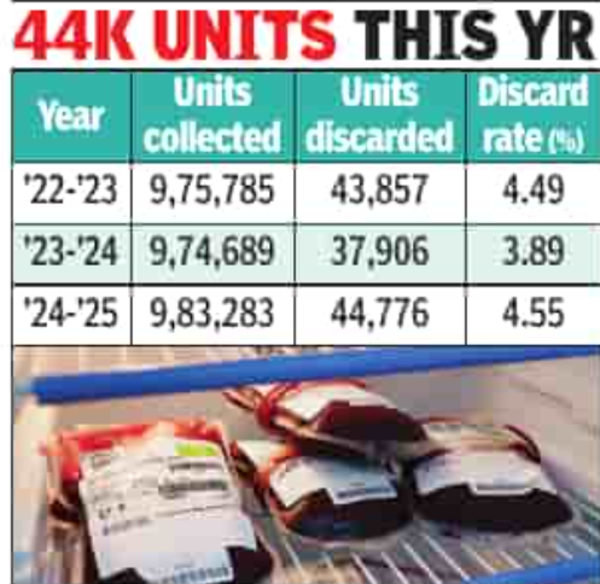Wastage in Karnataka blood banks hits a 3-year high | Bengaluru News

BENGALURU: Karnataka has discarded 44,776 units of blood this year – the highest recorded wastage in the past three years – according to data from the State Blood Cell. Data accessed by TOI showed a sharp rise in discarded blood units in 2024-25, up from 37,906 units in 2023-24 and surpassing the 43,857 units discarded in 2022-23. Each discarded unit represents roughly 450ml of blood.

This increase comes despite consistent blood collection volumes across the years: 9.83 lakh units were collected in 2024-25, compared to 9.74 lakh in 2023-24 and 9.75 lakh in 2022-23. Health officials attribute a significant portion of the wastage to sero-reactive blood-units that test positive for infections such as HIV, hepatitis B and C, syphilis, or malaria. These infections are typically detected only after the blood is collected and tested in laboratories, as most blood donation camps do not screen for infections in advance.Doc: Limited shelf life of blood components raises wastage Most blood donation camps only check haemoglobin levels before accepting a donor,” said Dr Shakila N, deputy director of State Blood Cell and Blood Storage Unit. “It’s only during post-collection lab processing that we discover if the blood is sero-reactive. While donors are informed immediately about their health status, these units are deemed unusable and must be discarded.”Dr Shakila highlighted that the limited shelf life of blood components contributes to further wastage. Platelets, for instance, last just five days, while red blood cells can be stored for up to 42 days. “If these components aren’t used within that window – due to low demand, delays in processing, or lack of coordination – they expire and have to be thrown away,” she explained. Beyond medical reasons, logistical challenges such as over-collection during donation drives, poor stock rotation, and inaccurate forecasting of blood type demand also led to unnecessary losses.Despite the increase in absolute numbers, officials note that the discard rate – as a percentage of total collected units – has declined in recent years. “We’re working to reduce wastage through improved planning, better inventory management, and donor education,” Dr Shakila added.
















